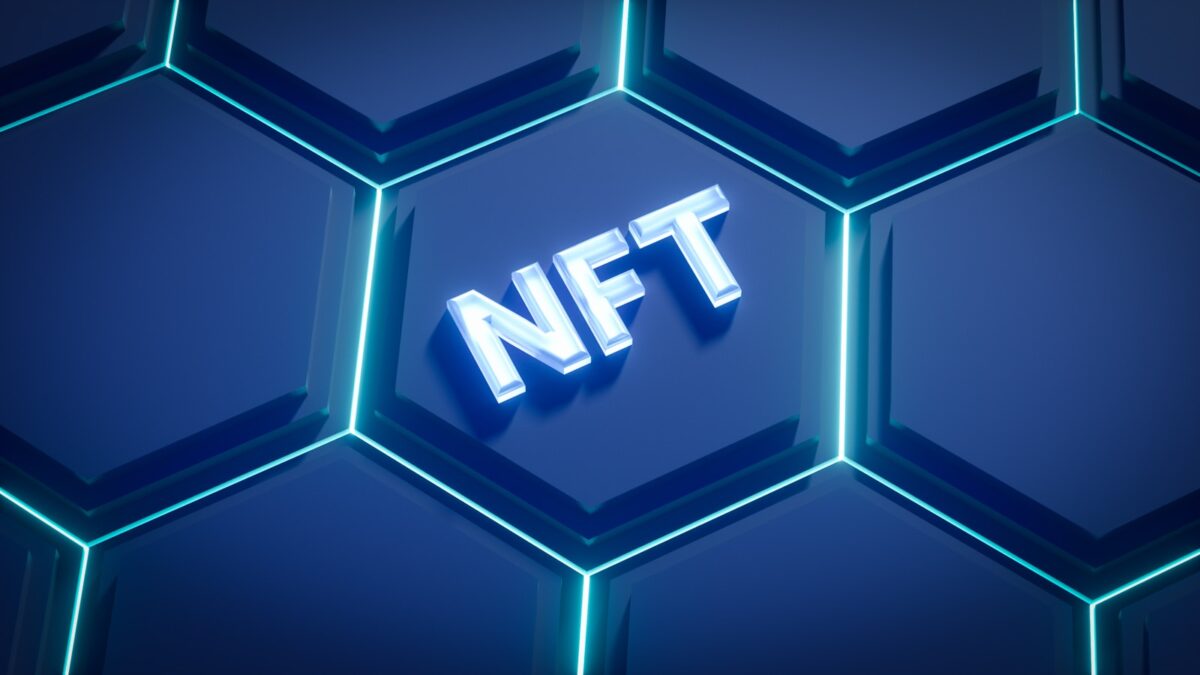
Wrapped tokens explained

Leveraging wrapped representations allows seamless transfer of value across distinct blockchain ecosystems. For instance, WBTC serves as an ERC-20 representation of Bitcoin on the Ethereum network, maintaining 1:1 backing with BTC to preserve intrinsic worth. This mechanism enables users to utilize Bitcoin’s liquidity within decentralized finance protocols native to Ethereum without relinquishing their original holdings.
Interoperability between blockchains hinges on effective bridging solutions that mint equivalent assets on target chains. When original tokens are locked securely on their home chain, a corresponding wrapped version is issued elsewhere, facilitating cross-chain usability while safeguarding against double-spending. WETH, or Wrapped Ether, exemplifies this by converting native Ether into an ERC-20 compliant form suitable for various smart contracts requiring standardized token interfaces.
The value proposition of these synthetic asset forms extends beyond mere representation–it catalyzes composability in multi-chain environments. By enabling assets like Bitcoin or Ether to participate in applications outside their native platforms, wrapped forms foster experimental financial constructs and diversified strategies. Investigating bridge protocols and custodial models reveals trade-offs between decentralization and security, enriching understanding of blockchain integration dynamics through practical experimentation.
Understanding Asset Representation through Wrapping Mechanisms
The concept of asset representation on different blockchain networks is crucial for enabling interoperability across ecosystems. By creating a pegged equivalent of an original cryptocurrency on another chain, users gain the ability to transfer and utilize value beyond the constraints of a single network. This process involves locking the native asset in a smart contract and issuing an equivalent digital surrogate, maintaining a 1:1 backing that ensures consistent value preservation.
One prominent example is the conversion of Ether (ETH) into its Ethereum-based ERC-20 compatible counterpart, often abbreviated as WETH. Unlike ETH, which cannot be directly used in decentralized finance (DeFi) protocols requiring tokens adhering to ERC-20 standards, this wrapped version provides seamless compatibility without sacrificing intrinsic value. This solution exemplifies how representation facilitates broader participation within complex decentralized applications.
Technical Foundations and Cross-Chain Bridging
Cross-chain communication relies heavily on bridges – specialized infrastructures that enable assets to move between distinct blockchains securely. When an asset is transferred via a bridge, it is typically locked or escrowed on the source chain while a pegged equivalent is minted on the destination chain. These mint-and-burn mechanisms ensure that total supply remains constant and prevent double-spending risks.
For instance, Bitcoin’s integration with Ethereum ecosystems uses such bridging techniques to create tokenized BTC versions like Wrapped BTC (WBTC). This synthetic variant allows Bitcoin holders access to Ethereum DeFi services without relinquishing exposure to BTC’s market dynamics. The technical challenge lies in ensuring trust minimization and robust oracle systems that verify collateral status on both chains, preserving synchronized value representation.
- Representation: Asset depiction through pegged surrogates maintains economic equivalence.
- Interoperability: Enables cross-network transactions and composability within diverse protocols.
- Value preservation: Locking mechanisms back issued equivalents one-to-one.
The reliability of these processes depends largely on the security design of smart contracts managing locked reserves and the transparency of custodial arrangements when centralized custodians are involved. Decentralized autonomous organizations (DAOs) increasingly govern these functions to mitigate counterparty risks inherent in custodial solutions.
A practical investigation into wrapped asset usage reveals benefits beyond simple liquidity extension. Experimental deployments show enhanced capital efficiency by allowing assets native to high-security chains like Bitcoin to participate in fast-executing environments such as Ethereum Layer 2 solutions. Researchers can analyze transaction throughput improvements and reduced latency when leveraging bridged representations compared with direct cross-chain swaps or atomic transactions.
How Wrapped Assets Function in Blockchain Networks
To enable seamless cross-chain operations, blockchain ecosystems utilize a mechanism that creates a direct representation of an asset from one network on another. For example, the process involves locking the original asset on its native chain and minting an equivalent unit on the target chain, ensuring the pegged value remains consistent. This approach allows users to leverage assets like Ether or Bitcoin within decentralized applications (dApps) outside their original environment.
A practical case is wETH, which stands for wrapped Ether. Since Ether itself does not conform directly to ERC-20 standards, wETH acts as an ERC-20-compliant surrogate on Ethereum. Its issuance corresponds 1:1 with locked ETH, enabling smart contracts and DeFi platforms to interact uniformly with it. This duality demonstrates how digital assets gain enhanced utility through such synthetic representations.
Mechanics of Cross-Chain Asset Representation
The core technical framework behind these surrogate assets relies on a bridge, a protocol designed to synchronize states between heterogeneous blockchains. When a user deposits an asset like BTC into the bridge’s custody contract, it triggers minting of corresponding tokens such as WBTC (Wrapped Bitcoin) on Ethereum. The reverse process burns WBTC tokens and releases BTC back onto its native ledger, preserving total supply integrity.
This system depends heavily on trust assumptions embedded within custodianship models or decentralized multi-signature schemes controlling the locked reserves. Additionally, consensus mechanisms confirm deposit and withdrawal events to prevent double-spending or fraudulent minting. The interplay between these elements ensures that each surrogate maintains exact parity in value with its underlying counterpart.
Interoperability gains momentum as these instruments allow liquidity migration across isolated blockchains without requiring native token swaps or centralized exchanges. Through programmable bridges and standardized interfaces, developers can create financial products that span multiple networks while retaining security guarantees inherent to each protocol.
Diversified examples illustrate this concept: Binance Smart Chain hosts BEP-20 versions of various coins by locking originals on other chains; Polygon supports wrapped tokens representing mainnet Ethereum assets; Avalanche employs similar techniques for cross-chain asset portability. These cases underline how bridging technologies underpin evolving multi-chain ecosystems by facilitating continuous circulation of value beyond initial boundaries.
Use Cases for Pegged Assets in Blockchain Ecosystems
The primary application of pegged digital assets lies in enhancing interoperability between distinct blockchain networks. By creating a representation of an asset native to one chain on another, such as WBTC (Wrapped Bitcoin) on Ethereum, users can leverage Bitcoin’s value within Ethereum’s DeFi protocols. This cross-chain bridging enables holders to maintain exposure to Bitcoin while participating in decentralized lending, borrowing, and yield farming on Ethereum. The pegged asset maintains a 1:1 backing with the original token through custodial or smart contract mechanisms, ensuring consistent value alignment.
Another significant use case involves liquidity provisioning across multiple decentralized exchanges (DEXs). For instance, WETH, which is an Ethereum-native version of ETH conforming to ERC-20 standards, facilitates seamless integration into automated market makers (AMMs) and liquidity pools that require standardized tokens. This representation expands the utility of native coins by enabling them to interact with complex smart contracts without altering their intrinsic value. Consequently, it supports broader participation in decentralized finance by overcoming native token incompatibilities.
Cross-chain bridges utilize these pegged assets to facilitate secure and trust-minimized transfers of value across heterogeneous blockchains. Employing multi-signature schemes or decentralized custodianship models, these bridges lock the original asset while minting an equivalent representation on the target chain. This method ensures atomicity and reduces counterparty risk during transfers. Such infrastructure allows developers and users to exploit functionalities from different ecosystems simultaneously, effectively expanding the operational domain of each underlying blockchain.
Beyond DeFi and bridging solutions, pegged representations serve as foundational components for synthetic asset platforms and derivatives markets. By tokenizing real-world or crypto assets into interoperable forms, platforms enable creation of complex financial instruments like options, futures, or indexed baskets anchored to external values. This approach enriches market depth and provides new mechanisms for hedging and speculation without requiring direct ownership of the underlying asset. These applications demonstrate how pegged instruments extend blockchain utility beyond mere transferability toward sophisticated financial engineering.
Wrapping Process Step-by-Step
The creation of a tokenized representation such as WBTC or WETH involves a precise sequence of actions designed to maintain value consistency and enable interoperability across distinct blockchain ecosystems. Initially, an asset holder deposits the original cryptocurrency into a custodian or smart contract that securely locks the underlying funds. This locking mechanism ensures that each unit of the newly issued equivalent corresponds directly to one unit of the original asset, preserving parity and trust.
Following the deposit, a minting protocol generates an equivalent amount of the cross-chain compatible asset on the target blockchain. For example, when converting Bitcoin into WBTC on Ethereum, 1 BTC locked by the custodian triggers minting of 1 WBTC on Ethereum’s network. This process establishes a verifiable link between chains through cryptographic proofs and transparent records maintained by decentralized or centralized custodians.
Stepwise Breakdown of Token Representation Creation
- Asset Deposit: The user transfers native coins (e.g., BTC) to a designated custodian or locking smart contract, which freezes these assets from circulation.
- Verification: The system confirms receipt and secures funds using multi-signature wallets or audited contracts to prevent unauthorized access.
- Minting Equivalent Units: Once verified, an identical quantity of tokens is minted on the destination blockchain (e.g., Ethereum), reflecting ownership while enabling new use cases within decentralized applications.
- Distribution: Minted units are delivered to the user’s address on the target chain, granting them immediate liquidity and utility in DeFi protocols or trading platforms.
- Redemption Mechanism: To reverse this process, users can send wrapped units back to be burned; simultaneously, original assets are released from custody and returned to their control.
This cyclical operation relies heavily on secure bridging technology facilitating trustless communication between blockchains. Bridges function as intermediaries that relay state changes and confirm asset custody status before authorizing minting or burning events. Their security model often integrates decentralized validation nodes or consensus algorithms minimizing risks inherent in centralized custodianship.
The practical implications of this methodology become evident when examining use cases like WETH – where Ether is represented as an ERC-20 compatible form allowing participation in diverse DeFi protocols requiring standardized token interfaces. Similarly, WBTC enables Bitcoin holders to access Ethereum-based lending platforms without relinquishing Bitcoin exposure. In both scenarios, cross-chain functionality enhances liquidity flow and broadens market opportunities while retaining intrinsic value backed by locked reserves.
Risks of Wrapped Assets
The primary risk associated with using wrapped representations lies in the reliance on centralized or semi-centralized bridge mechanisms that facilitate cross-chain interoperability. These bridges lock the original asset–such as Bitcoin in the case of WBTC–and issue an equivalent pegged representation on another blockchain, typically Ethereum. If the custodian or smart contract managing this lock-and-mint process suffers from a security breach, mismanagement, or operational failure, users face potential loss or freezing of their underlying value. The 2022 Ronin Bridge exploit exemplifies how vulnerabilities in bridging infrastructure can lead to millions of dollars being stolen, exposing inherent systemic fragilities.
Another critical concern is the transparency and auditability of reserve backing for pegged assets. While tokens like WETH represent native Ethereum in a wrapped form through a trustless smart contract, many pegged assets depend on third-party custodians holding actual coins off-chain. Incomplete or infrequent auditing processes can obscure true backing ratios, risking overissuance and devaluation if market participants lose confidence. This opacity challenges users’ ability to verify that each wrapped unit corresponds accurately to one unit of the underlying asset.
Technical Vulnerabilities and Market Risks
The architecture enabling cross-chain functionality introduces complex attack surfaces beyond traditional smart contract risks. For instance, consensus failures or delayed finality on one chain can disrupt synchronization with its counterpart chain, causing temporary inconsistencies in token balances or transaction states. Such discrepancies may trigger arbitrage opportunities but also undermine trust in pegged representations’ reliability during volatile periods.
Market liquidity constraints further complicate risk profiles for these synthetic assets. Large-scale redemption requests for tokens pegged to scarce underlying assets might experience slippage or delays due to insufficient liquidity pools on destination chains. This mismatch impacts price stability and can result in widened spreads between the wrapped asset’s market price and its real-world value. Users should carefully assess liquidity depth before engaging in significant transfers or trades involving these instruments.
Finally, governance models governing bridge protocols and minting authorities play a pivotal role in mitigating risks yet introduce centralization concerns themselves. Concentrated control over minting rights for pegged digital assets enables rapid response to threats but simultaneously creates single points of failure susceptible to insider threats or regulatory interventions. Continuous improvements in decentralized custody solutions and multi-signature schemes are necessary experimental pathways to enhance security without sacrificing usability across heterogeneous blockchains.
Where to Trade Wrapped Assets: Strategic Insights and Future Directions
Decentralized exchanges (DEXs) and centralized platforms supporting cross-chain bridges remain the most effective venues for trading pegged digital representations like WBTC. Utilizing bridges that enable seamless interoperability between distinct blockchains preserves the intrinsic value of these assets while facilitating liquidity flow across heterogeneous networks.
The ability to trade such synthetic forms of native cryptocurrencies hinges on their standardized representation, which must maintain a consistent peg to the original asset. For example, WBTC’s integration within Ethereum-based DeFi protocols underscores how wrapped equivalents extend accessibility without compromising authenticity, enabling traders to leverage familiar instruments in new ecosystems.
Analytical Summary and Forward-Looking Considerations
- Interoperability through bridges: Cross-chain communication solutions play a pivotal role in ensuring that tokenized representations retain synchronized value, minimizing slippage and arbitrage risks during transactions.
- Platform selection criteria: Traders should prioritize venues offering robust smart contract audits, transparent minting/burning mechanisms, and active liquidity pools to safeguard against counterparty risk inherent in synthetic asset issuance.
- Widening use cases: As wrapped equivalents gain adoption beyond simple trading–spanning lending, staking, and yield farming–their availability on multi-chain platforms will catalyze composability within decentralized finance architectures.
- Regulatory impact: Monitoring compliance frameworks affecting pegged digital assets can influence exchange listings and bridge operations, necessitating adaptive strategies by market participants.
The evolution of cross-chain protocols will likely enhance atomic swaps involving tokenized representations, reducing reliance on centralized custodians. Experimental deployments of trustless wrapping methods could further democratize access while strengthening the integrity of value transfer mechanisms.
Investigating emerging technologies such as layer-2 rollups combined with interoperable wrappers invites deeper exploration into scaling trade capacity without sacrificing security or decentralization. This progression encourages practitioners to critically evaluate both technical parameters and economic incentives shaping future marketplaces for these cryptographic derivatives.


